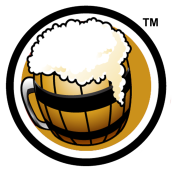Hops
|
Amount
|
Variety
|
Cost
|
Type
|
AA
|
Use
|
Time
|
IBU
|
Bill %
|
|
1.25 oz |
East Kent Goldings1.25 oz East Kent Goldings Hops |
|
Pellet |
5.7 |
Boil
|
60 min |
41.29 |
83.3% |
|
0.25 oz |
East Kent Goldings0.25 oz East Kent Goldings Hops |
|
Pellet |
5.7 |
Boil
|
5 min |
1.65 |
16.7% |
|
1.50 oz
/ $ 0.00
|
Hops Summary
|
Amount
|
Variety
|
Cost
|
IBU
|
Bill %
|
|
1.50 oz |
East Kent Goldings (Pellet) 1.4999999965689 oz East Kent Goldings (Pellet) Hops |
|
42.94 |
100% |
|
1.50 oz
/ $ 0.00
|
Mash Guidelines
|
Amount
|
Description
|
Type
|
Start Temp
|
Target Temp
|
Time
|
|
|
|
-- |
-- |
153 °F |
90 min |
Starting Mash Thickness:
1.5 qt/lb
|
Notes
Those that go toward the malty side eventually want to brew strong Scotch ale. It is kind of like the IPA of the malty world. Also known as wee heavy, it is a rich, malty beer. Do not confuse strong Scotch ale with the much lower alcohol Scottish strong ale. To avoid confusion, I think it is better to refer to strong Scotch ale as wee heavy. While wee heavy is related to the lower-alcohol Scottish ales, and could be considered a higher shilling version of them, wee heavy's higher starting gravity results in a different beer.
A good wee heavy is sweet, but not cloying, has a complex malt character, and has a warming, yet not harsh, alcohol presence. Enhancing the perception of sweetness is a low level of hop bitterness and considerable melanoidin character either from long boil times or specialty malt additions. Fermenting higher gravity wort not only results in higher alcohol beer, but also some additional ester formation. A good example of this beer will not be as clean and low-ester as Scottish ale. The color should range from light copper to dark brown, often with deep ruby highlights.
Unfortunately, quite a large number of judges still seem to reward only sweet, full, and boozy examples of the style. If you want to win at competition, you need to focus on bigger beers for this category. They expect a beer with warming alcohol, sweet malt complexity, and caramel notes. As for appearance, lean toward darker beers, but avoid roasted character. Hop bitterness should just barely balance the malt sweetness and late hop character should be minimal or non-existent.
Much of the rich malty flavors in wee heavy come from selecting a proper base malt. To brew an award-winning example of this style, start with British pale ale malt as the base. It provides that background biscuit-like malt character that is a key component in fine British beers. British pale ale malt is kilned a bit darker (2.5 to 3.5 °L) than the average American 2-row or pale malt (1.5 to 2.5 °L) and this higher level of kilning brings out the malt's biscuity flavors. Some brewers use North American pale ale malt or North American 2-row with the addition of 5–10% Munich malt when they cannot source British pale ale malt. This will not produce the same beer as using British pale ale malt, but will produce a pleasant
malt background.
Extract brewers should make the effort to source an extract made from British pale ale malt. If you end up using North American 2-row malt extract, you will need to compensate by partial mashing some additional specialty malts such as Munich or biscuit. For a 5-gallon (19-liter) batch, use about 5–10% of the total base malt.
All-grain brewers should use an infusion mash. You will find a temperature in the range of 152–158 °F (67–70 °C) works well. Use a lower temperature when using lower attenuating yeasts or higher starting gravities. Use a higher mash temperature when using the higher attenuating yeasts or lower starting gravity beers. If you are unsure, a great starting point is 154 °F (68 °C).
In theory, you can brew a great example of the style by using only base malt, some roasted barley for color (less than 3%), and an extensive boil. The extensive boil is to develop malt flavors that are a key component to the style. Judges will expect some caramel flavors and aromas in wee heavy and you can develop them through extended boiling. The best way, if you want to try it, is to boil down one gallon (4 L) of first runnings until it is thick and syrupy. While you will develop some caramel flavors by boiling for an extended time, it can be hit or miss. Often there is not enough caramel flavor or the flavor that develops is more toffee-like and judges think the beer has a diacetyl problem.
So, the easiest and most consistent way to get the proper caramel character is the use of crystal malt. Allocating 5-10% of the grist for crystal malt should add the right character. I prefer to split the crystal malts into a couple different color ranges. Lighter color crystal malts add sweeter caramel notes, mid-color crystal adds more caramel flavor, and dark crystal adds some raisin notes. The beer should have a rich color, so a touch of highly kilned malts, such as roasted barley can add a hint of balancing dryness and the depth of color that judges are looking for.
If you are looking for more complexity, you can add other specialty malts. Wheat malt, Victory®, biscuit, and others are common additions in many recipes, but re-straint is important so that the beer does not become saturated with non-fermentable dextrins and cloying flavors. In general, keep the total of all specialty grain additions to less than 20% of an all-grain grist. Keep highly kilned malt additions small (less than 3%), as bold roasted flavors are not appropriate.
If you want to develop more color and more melanoidin-based flavors and aromas, start with a larger pre-boil volume so you can boil the wort for two hours or more. This develops a unique character that is not possible by grain additions alone. Regardless of what you might read on the Internet, do not add peat smoked malt to your wee heavy. It is not appropriate. Any suggestion of smoke character is possibly from the use of roasted barley and long boil times. It is not from the water and it is not from peat smoke.
Wee heavy is best brewed with English hops such as East Kent Goldings, Fuggles, Target, North-down, or Challenger. As a general rule of thumb, you can skip any late hop additions. If you do add late hops, make sure they do not overwhelm the malt character — a half-ounce (14 g) of a mild hop, such as Kent Goldings, would be about all you should add.
Bittering additions are similarly subtle. You want just enough hop bitterness to add a little balance to the malt sweetness. Target a bitterness to starting gravity ratio (IBU divided by OG) of 0.2 to 0.4. One thing to be aware of is the effect of highly kilned specialty malts on the perception of dryness and bittering. If you use more low color malts, such as crystal for color, the beer will have a sweeter overall impression than if you use just base malt and roasted barley for color. You would adjust your bittering slightly to account for this difference.
Fermentation for all of the Scottish ale styles requires a clean, neutral yeast character. The goal for wee heavy is a beer with relatively low esters, as compared to British ales, and lots of rich malt flavor.
While I prefer White Labs WLP001 (California Ale) or Wyeast 1056 (American Ale) for the lower gravity Scottish ales, I like yeast with a little more fermentation character and a richer maltiness for wee heavy. White Labs WLP028 (Edinburgh Ale) and Wyeast 1728 (Scottish Ale) are both excellent choices for this style as well. In a pinch, you could use other yeasts. The important thing is finding one that has a more malt forward character.
Cool fermentation, proper pitching rates, adequate yeast nutrition, and the proper addition of oxygen to the wort also factor into getting that rich malt character, gentle warming alcohol, and fully attenuated (not syrupy) beer. On bigger beers like this, I start fermentation at the lower end of their range and then let the temperature rise at least a few degrees over the course of a couple of days. This helps moderate the production of hot tasting alcohols, helps the yeast attenuate fully, and keeps the amount of diacetyl in the finished beer to a minimum.

Last Updated and Sharing

- Public: Yup, Shared
- Last Updated: 2015-04-22 18:34 UTC
For quick copying and pasting to a text based forum or email.
Click the Download as HTML file button below.
Recipe costs can be adjusted by changing the batch size. They won't be saved but will give you an idea of costs if your final yield was different.
|
Cost $ |
Cost % |
| Fermentables |
$ |
|
Steeping Grains
(Extract Only) |
$ |
|
| Hops |
$ |
|
| Yeast |
$ |
|
| Other |
$ |
|
| Cost Per Barrel |
$ 0.00 |
|
| Cost Per Pint |
$ 0.00 |
|
| Total Cost |
$ 0.00 |
|
Discussion about this recipe:
